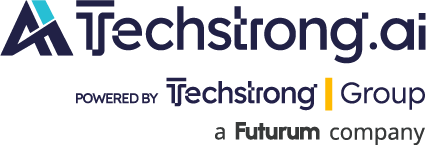
Boomi is transforming the integration platform landscape with the introduction of Boomi Builder, a generative AI-powered low-code tool that promises to simplify and accelerate the development of enterprise integrations. At the recent Boomi World event, the company unveiled this groundbreaking technology alongside several other innovations designed to streamline data connectivity across the enterprise.
Boomi Builder: Integration Development Reimagined
The centerpiece of Boomi’s announcements was Boomi Builder, an AI-powered development assistant that enhances the company’s already robust low-code platform. Builder leverages natural language processing to convert plain language requests into functional integration components, dramatically reducing development time while maintaining precise control over the integration process.
“Integration developers spend approximately 60% of their time searching for information or working through complex technical tasks,” explained Matt McLarty, Boomi’s chief technology officer, during the product keynote. “Boomi Builder eliminates these inefficiencies by allowing developers to specify what they need in natural language and having the AI generate the appropriate components.”
The tool works seamlessly within Boomi’s integration platform, enabling users to:
- Generate integration processes from natural language descriptions
- Automatically map fields between different data sources
- Suggest optimizations for existing integrations
- Create function expressions and transformations through conversational prompts
- Auto-document integration processes, improving governance and knowledge transfer
During the demonstration, Boomi’s product team showed how a developer could request, “Create an integration that retrieves new customer records from Salesforce and sends them to our SQL database,” and Boomi Builder would generate the complete process flow with appropriate connectors, transformations, and error handling.
What differentiates Boomi Builder from other AI-assisted development tools is its deep integration with Boomi’s AtomSphere platform and the company’s extensive library of pre-built connectors. The system draws on this institutional knowledge to ensure that generated integrations follow best practices and established patterns.
AtomSphere Advances: Beyond Builder
Boomi Builder wasn’t the only significant announcement at the event. The company also unveiled several enhancements to its flagship AtomSphere platform:
Enhanced Event-Driven Architecture Support: New capabilities to build, deploy, and manage event-driven integrations with improved reliability and scalability. The enhancements include advanced event routing, filtering, and transformation capabilities that support real-time data processing needs.
Expanded API Management: Comprehensive updates to Boomi’s API management capabilities, including new security features, enhanced developer portal functionality, and improved analytics for API usage and performance.
Multi-Cloud Deployment Flexibility: New deployment options across major cloud providers with improved governance and monitoring tools to manage hybrid integration environments efficiently.
Sustainability Dashboard: A first-of-its-kind feature that provides organizations with visibility into the environmental impact of their integration processes, allowing them to optimize for both performance and sustainability.
The Business Impact
For enterprises struggling with integration challenges, these announcements represent significant progress toward more manageable and efficient connection of disparate systems.
Ed Macosky, Chief Product Officer at Boomi, emphasized the business value during his presentation: “Integration shouldn’t be a bottleneck for digital transformation. With these advancements, particularly Boomi Builder, we’re reducing the skills gap that often slows integration projects and empowering businesses to connect their systems and data more rapidly.”
Industry analysts at the event noted that Boomi’s AI approach differs from competitors by focusing on practical application rather than theoretical capabilities. “What impressed me about Boomi Builder is that it’s solving real-world integration challenges that developers face daily,” remarked one analyst in attendance. “It’s not AI for AI’s sake – it’s about making integration development more efficient and accessible.”
“Boomi is smartly applying generative AI with Boomi Builder to solve tangible, everyday integration challenges, which is precisely what enterprises require to accelerate their digital transformation agendas,” said Mitch Ashley, VP and Practice Lead, DevOps and Application Development at Futurum. “The combination of AI-driven development for integration, event-driven architecture support, and even a sustainability dashboard, demonstrates Boomi is considering the future of enterprise connectivity and its broader operational uses.”
Customer Perspectives
Early access customers shared their experiences with Boomi Builder during a panel discussion. A director of integration from a large healthcare organization noted, “We’ve seen a 40% reduction in development time for standard integrations. More importantly, our less-experienced developers are now able to create complex integrations that previously required senior-level expertise.”
Another customer from the financial services sector highlighted the governance benefits: “The auto-documentation feature alone is transformative for us. We’ve struggled with knowledge transfer when key personnel leave, and this helps ensure our integration processes are well-documented and maintainable.”
Future Roadmap
Looking ahead, Boomi executives outlined a vision where AI becomes increasingly central to the platform’s capabilities. Future plans include:
- Predictive integration health monitoring that identifies potential issues before they impact business operations
- Autonomous optimization that continuously refines integration processes based on performance data
- Expanded natural language capabilities across the entire platform
- Deeper integration with enterprise AI initiatives
- Availability and Adoption
Boomi Builder will be available to select customers through an early access program in Q3 2025, with general availability planned for Q4. The other platform enhancements will roll out gradually over the next two quarters.
For organizations evaluating integration platforms, these announcements position Boomi as a forward-looking option that balances accessibility with enterprise-grade capabilities. As integration needs continue to grow with the expansion of SaaS applications, APIs, and data sources, tools like Boomi Builder that simplify the development process without sacrificing control will likely become increasingly valuable.
In an era where IT teams are continually asked to do more with less, Boomi’s AI-powered approach to integration provides a promising path forward—one that leverages artificial intelligence to augment human capabilities rather than replace them, ultimately accelerating digital transformation initiatives across the enterprise.

